
Piercing the veil
A new exhibition at Buxton Contemporary finds a rich complexity in the shadowy terrain between life and death.
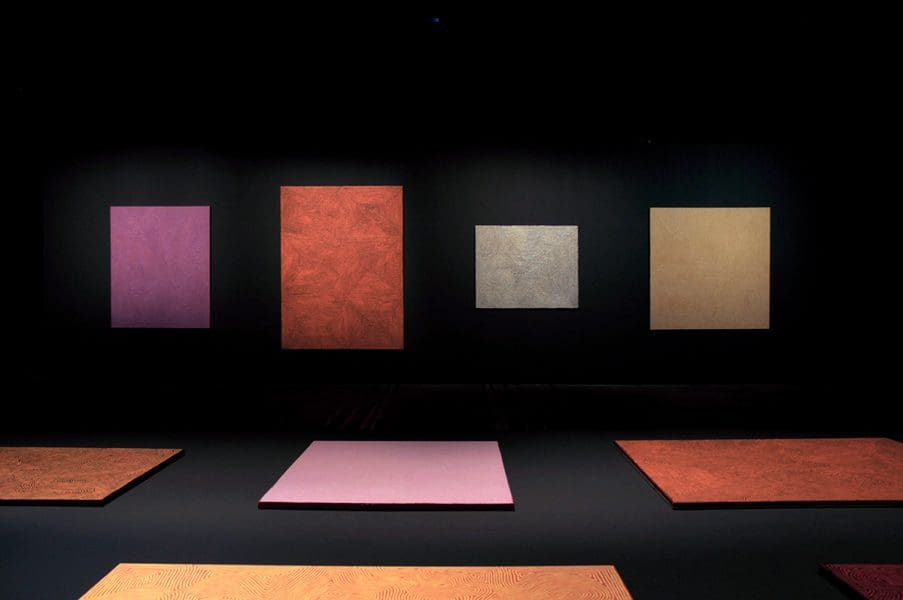
George Tjungurrayi’s work in the 21st Biennale of Sydney installed at Carriageworks, 2018. Courtesy of Utopia Art Sydney.
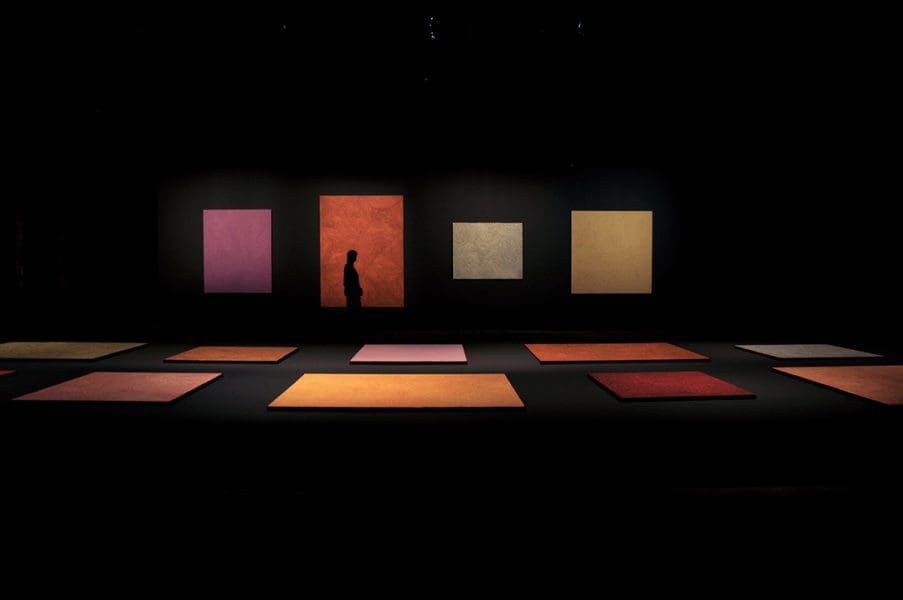
George Tjungurrayi’s work in the 21st Biennale of Sydney installed at Carriageworks, 2018. Courtesy of Utopia Art Sydney.
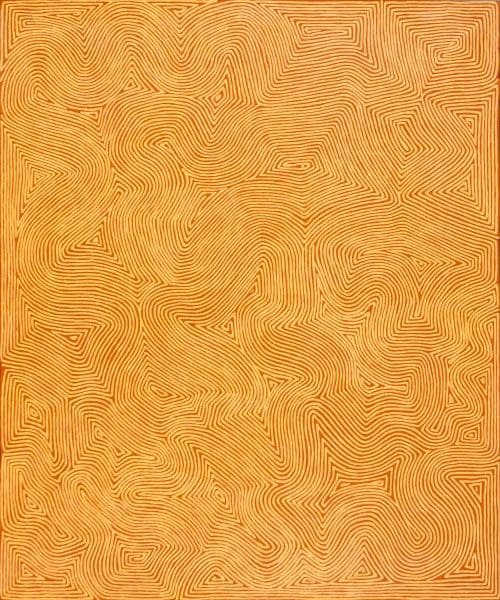
George Tjungurrayi, Untitled, 2017, acrylic on linen, 153 x 122 cm. Courtesy of Utopia Art Sydney.
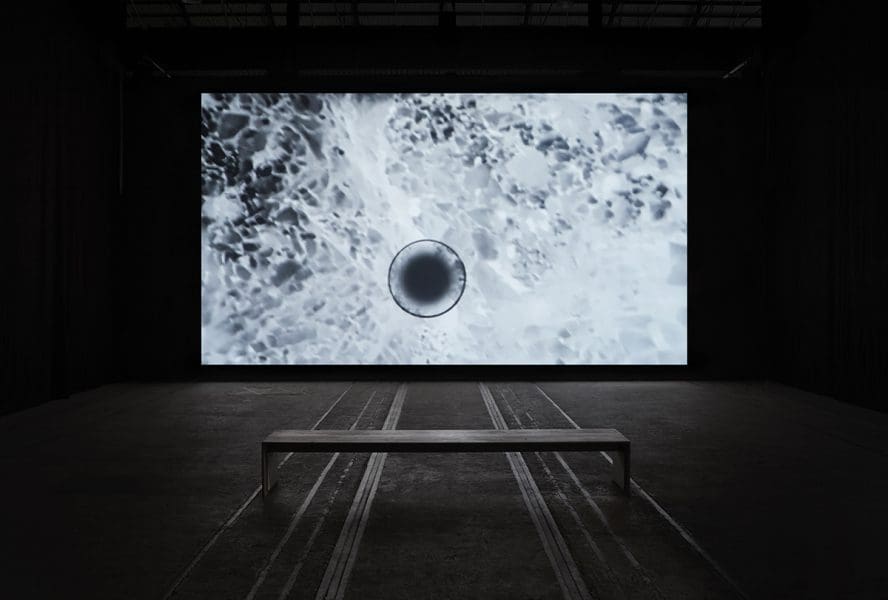
Laurent Grasso, OTTO, 2018, HD video, 21:26 mins. Installation view at Carriageworks for the 21st Biennale of Sydney. Commissioned by the Biennale of Sydney with generous assistance from the Ambassade de France en Australie; Institut français; and Mami Kataoka. Courtesy the artist; Edouard Malingue Gallery, Hong Kong and Shanghai; Sean Kelly Gallery, New York; and Galerie Perrotin, New York, Paris, Hong Kong, Seoul and Tokyo. Photograph: Zan Wimberley.

Laurent Grasso, OTTO, 2018, HD video (video still), 21:26 mins. Created in consultation with Otto Jungarrayi Sims, Chairman, Warlukurlangu Artists Aboriginal Corporation, Yuendumu with support from Cecilia Alfonso, Manager, Warlukurlangu Artists Aboriginal Corporation, Yuendumu. Copyright © Laurent Grasso / ADAGP, Paris 2018. Commissioned by the Biennale of Sydney with generous assistance from the Ambassade de France en Australie; Institut français; and Mami Kataoka. Courtesy the artist; Edouard Malingue Gallery, Hong Kong and Shanghai; Sean Kelly Gallery, New York; and Galerie Perrotin, New York, Paris, Hong Kong, Seoul and Tokyo.
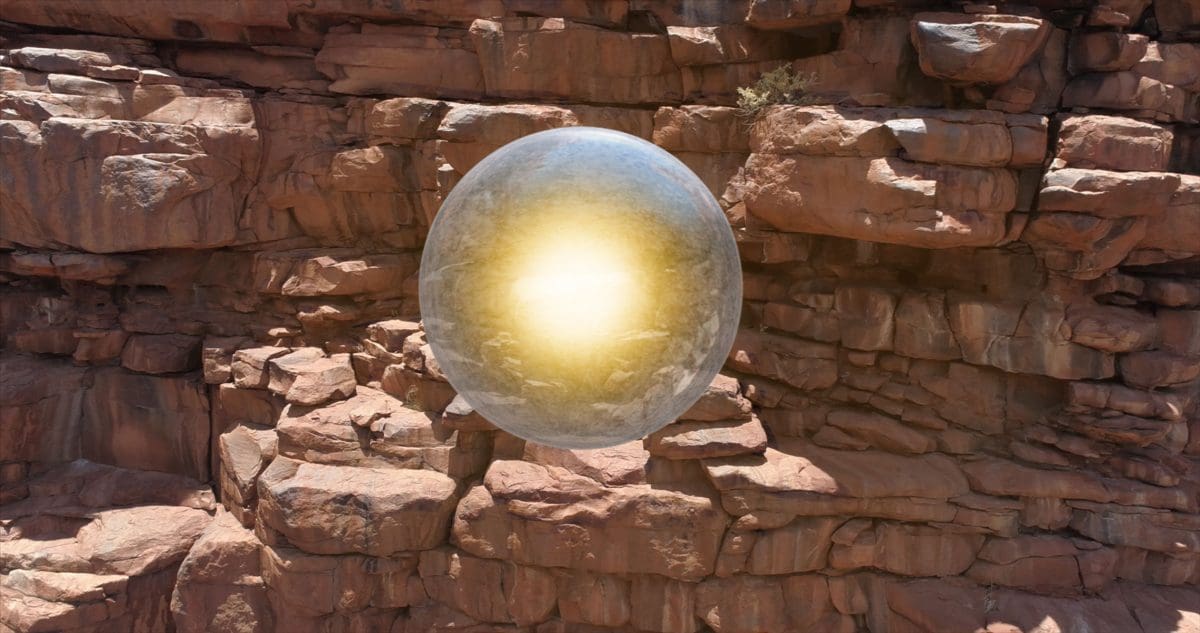
Laurent Grasso, OTTO, 2018, HD video (video still), 21:26 mins. Created in consultation with Otto Jungarrayi Sims, Chairman, Warlukurlangu Artists Aboriginal Corporation, Yuendumu with support from Cecilia Alfonso, Manager, Warlukurlangu Artists Aboriginal Corporation, Yuendumu. Copyright © Laurent Grasso / ADAGP, Paris 2018. Commissioned by the Biennale of Sydney with generous assistance from the Ambassade de France en Australie; Institut français; and Mami Kataoka. Courtesy the artist; Edouard Malingue Gallery, Hong Kong and Shanghai; Sean Kelly Gallery, New York; and Galerie Perrotin, New York, Paris, Hong Kong, Seoul and Tokyo.
George Tjungurrayi’s brightly coloured paintings seem to hover in the darkened space at Carriageworks. From a distance these canvases practically glow, they resemble cut jewels strewn across black velvet or rectilinear stars winking in the deep, dark sky. Tjungurrayi’s paintings are both striking and subtle; they invite long and quiet contemplation.
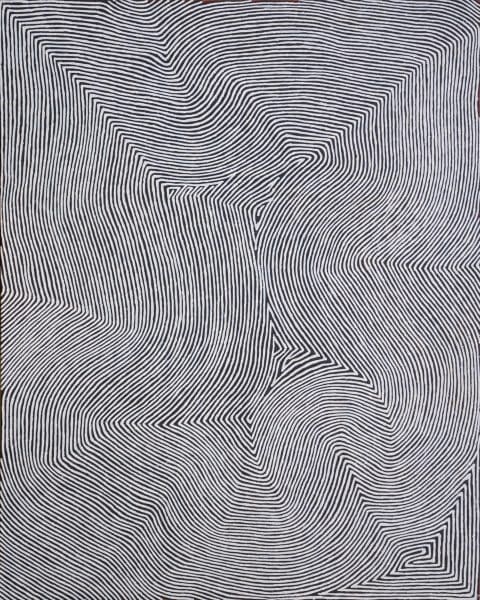
Or they would, if only they were in a silent space. Instead the hauntingly bleak soundtrack from Laurent Grasso’s video OTTO (composed by Grégoire Auger) permeates the entire cavernous gallery. But located immediately behind Tjungurrayi’s installation, it has a particularly strong impact on his work.
Born in 1972, Laurent Grasso is known for using his work to explore his interest in invisible scientific phenomena, paranormal activity and spirituality. Like many Westerners before him, the Paris-based artist seems to have felt the almost magnetic pull of the Australian desert, an ancient landscape occupied by Aboriginal people for millennia. Grasso shot, OTTO, a 26 minute-long epic on a continuous loop, in the Northern Territory near Yuendumu in consultation with the Warlukurlangu Artists Aboriginal Corporation.

Grasso’s video has a sci-fi edge which is accentuated by the slightly oppressive, vaguely mechanical throbbing of his compelling soundtrack. Kubrick’s masterpiece 2001: A Space Odyssey comes to mind as mysterious orbs hover over crystalline salt pans, fly across red ochre landscapes smouldering with embers, and traverse rocky canyons. The POV frequently shifts to the orbs themselves and they seem to register the world through temperature, rendering the landscape in red-hot orange, yellow, fuchsia pink, and warm deep blues and purples.
The title OTTO is a nod to Schumann resonances, low frequency electromagnetic resonance phenomena predicted in 1952 by German physicist Winfried Otto Schumann. And Grasso’s stated aim was to capture the hidden energies, both physical and spiritual, that pulse through the Aboriginal country he visited. But his sci-fi aesthetic, coupled with the fact that his work has literally staged an aural invasion of Tjungurrayi’s space, makes it almost impossible to see his orbs as physical manifestations of invisible cosmic forces. Instead, as the French artist makes his presence felt in the Indigenous artist’s territory, they appear to be an alien armada intent on conquest.
This bleeding of sound from one work to the other was almost certainly not the intention of either artist (and may or may not have been a deliberate intervention by the Biennale of Sydney artistic director Mami Kataoka), but it has created a dynamic situation: the entanglement of these two bodies of work functions synergistically.
George Tjungurrayi is a Pintupi man, born circa 1943.
Since 1997 he has been showing paintings in his idiosyncratic linear style. Grasso may have wanted to capture invisible resonances in the landscape, but Tjungurrayi’s optically confounding abstract paintings actually seem to shudder and vibrate with an inherent vital force all their own.
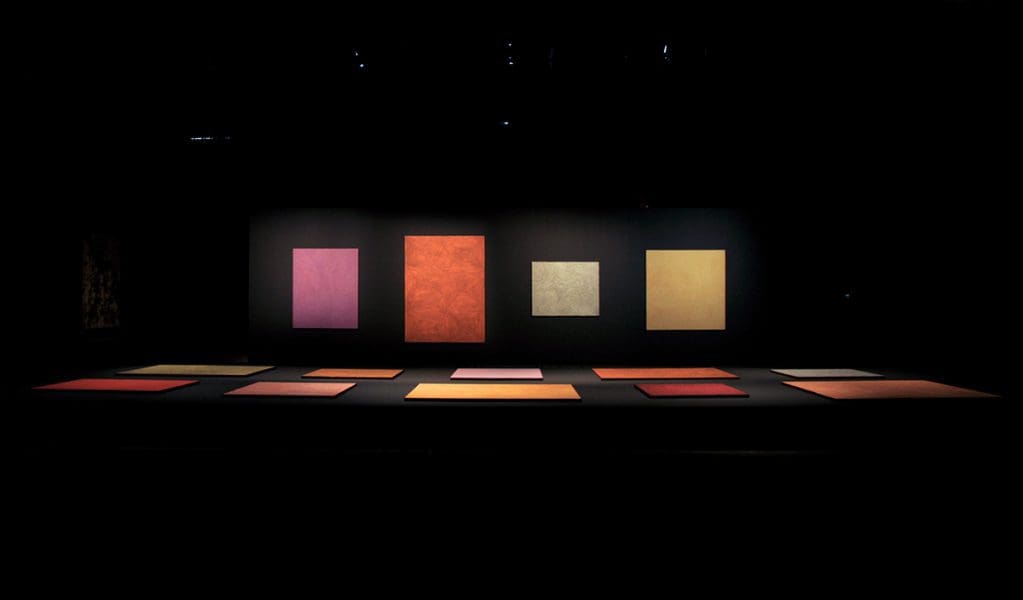
Conventional criticism tends to position Indigenous painting as a response to Country. Of course Country is a complex notion comprised of more than just landscape, but the 14 linear paintings Tjungurrayi presents in black, white, red, pink, and pale ochre shades do resemble a kind of topographical cartography. Whether or not this is the artist’s aim, the fact that the bulk of his work is displayed horizontally definitely encourages this interpretation. And read as landscape, Grasso’s distinctly dystopian, insidiously colonising soundtrack infuses Tjungurrayi’s work with poignant political reality. The Indigenous artist’s territory has been invaded, his people have been, and continue to be, threatened by both mainstream indifference and punitive legislation. Yet Tjungurrayi’s remarkable paintings are animated by a vibrant current; a palpable and potent force that cannot be contained.
George Tjungurrayi and Laurent Grasso
21st Biennale of Sydney
Carriageworks
16 March – 11 June